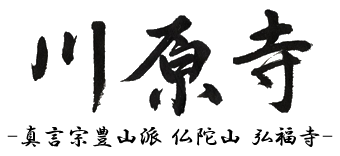Whispers of 1200 years-old Heian Buddhist statues still be heard now
Gufukuji Temple, Buddha San, Buzan School, Shingon Sect
In October 2017, an investigation conducted by Dr. OKOCHI Tomoyuki found that the wooden Buddhist statues at the worship hall, namely the Eleven Faced Kannon (Ekadasamukha), two of the Four Heavenly Kings (Dhrtarastra and Vaisravana), and the most of the Twelve Divine Generals serving Medicine Buddha (Bhaisajyaguru) are more than 1,200 years old. They are enshrined in an open space, not in a protective showcase, meaning they have always been watching over praying priests face to face. Even now, we can worship them in the same way.
According to a record, Kawaharadera Temple was abandoned in the late 16th century or the Muromachi period. Meanwhile, the succeeding Gufukuji Temple was established in the mid-18th century or the Edo period. But the Buddhist statues are of the early 9th century or the Heian period.What does this mean?
1,200 years ago (Heian period), Kawaharadera Temple was used as a lodging for Kobo Daishi Kukai, the founder of Shingon sect who often made a round trip between Koyasan and Kyoto, when he travelled from the Capital of Kyoto to his sacred monastery complex Koyasan.
We have two statues of the Four Guardian Kings of esoteric Buddhism; Jikokuten (Dhrtarastra) and Tamonten (Vaisravana). They are said to be carved by Kukai.
We also have the Japan’s third oldest Twelve Divine Generals serving Bhaisajyaguru (Medicine Buddha).
All of them are waiting for you to listen to your heart’s murmur.


